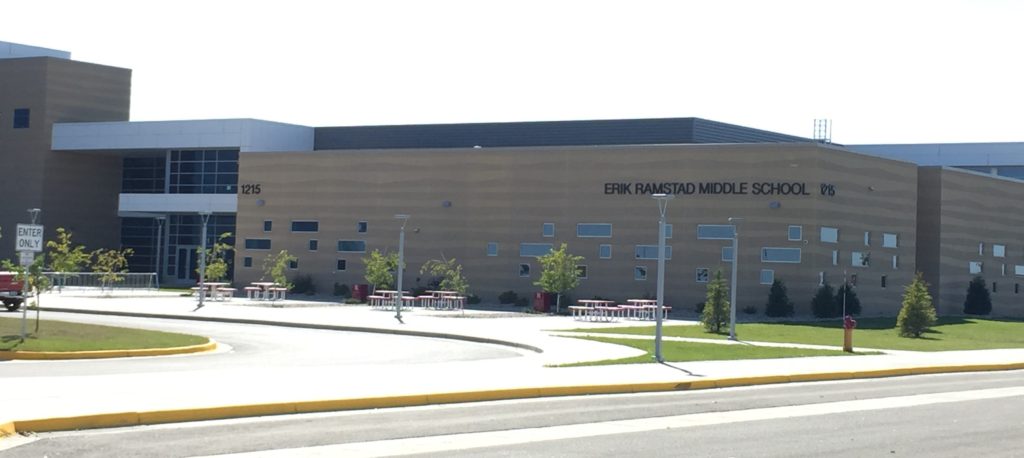In 2011, a devastating flood claimed the Erik Ramstad Middle School beyond salvage. The City of Minot determined that the best solution was to demolish the existing middle school and rebuild the school on a new 20 acre site located near the Minot International Airport and away from the floodplain. The school board and city officials decided to build the school as soon as possible and increase its overall size by 24,000 square feet to accommodate the area’s significant population growth. We were hired by general contractor Kraus Anderson to provide special inspection and material testing during the construction.
Constructing the school presented some unique challenges from an engineering perspective. The site was located in a field with cattail slough underlain with deep soft, compressible soils unsuitable for building support. Prior to construction, it was necessary to determine if the poor soils required removal and replacement, penetration with a special foundation system, or some form of modification to support the structure. To make sure the school was constructed in a way that would overcome the poor soils, Braun Intertec technicians were on site regularly to check soil bearing capacity and compaction as the project team corrected these large areas on the site. To meet aggressive construction deadlines, our engineers worked closely with the project contractor to make sure the process was being performed in accordance to stringent project specifications.
We also prepared a Federal Emergency Management Agency (FEMA)-required Environmental Assessment (EA) for the proposed new Erik Ramstad Middle School. An EA is an assessment of the potential positive and/or negative impacts that a proposed project may have on the physical and biological environment, on historic and cultural resources, and on the human (social) environment. The purpose of the assessment is to confirm that decision makers consider the potential environmental impacts when deciding whether to proceed with a project.
Upon its completion, the EA was published; federal, state, and local agencies and private citizens were then offered the chance to comment on the project and the EA. We coordinated all aspects of the EA and its publication, and facilitated a tribe-requested Cultural Resources Inventory (CRI) and Tribal Cultural Properties (TCP) assessment of the proposed site. The EA was completed in accordance with the aggressive construction timeline. The school is able to accommodate more than 700 students, grades 6-8.




